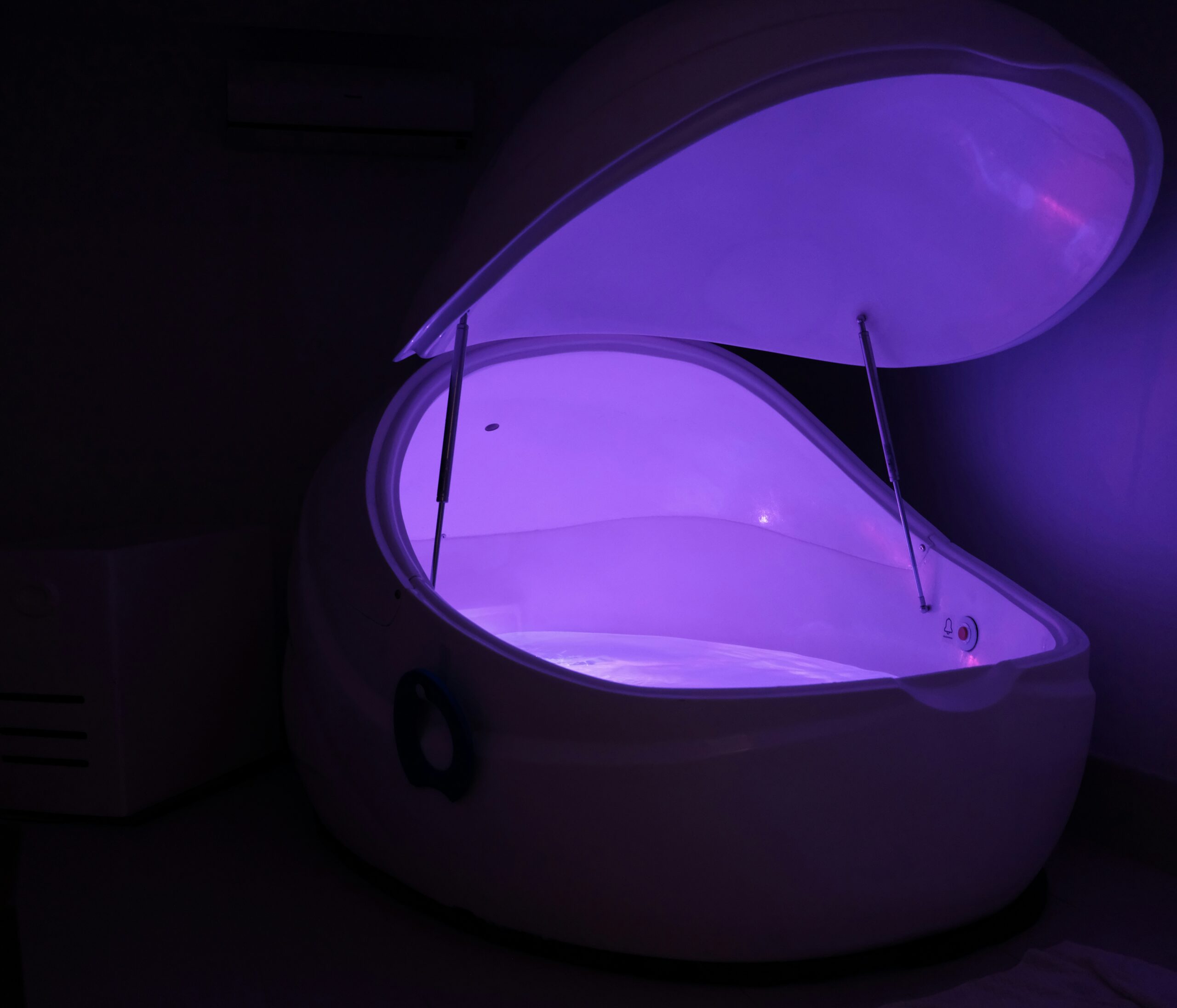Finding ways to disconnect and rejuvenate in our fast-paced, constantly connected world has become increasingly essential. Sensory deprivation floatation tanks, also known as isolation or float tanks, have emerged as a popular tool for promoting well-being. These tanks are designed to create an environment devoid of sensory input, allowing individuals to experience profound relaxation and therapeutic benefits.
My experience of the floatation tank was amazing, such an immense feeling of relaxation, as if in the womb or floating freely throughout space and time. The darkness and omission of noise allowed my mind to freely explore new territories, be free from normal thoughts, and follow new ideas. If you are looking for complete relaxation or inspiration, well worth experiencing.
Neuroscientist Dr. John C. Lilly first explored the concept of sensory deprivation in the 1950s. He created the first floatation tank to study the effects of sensory deprivation on the brain. His research revealed that contrary to initial concerns, sensory deprivation did not lead to negative psychological effects. Instead, participants reported deep relaxation and mental clarity.
Floatation tanks work by eliminating external stimuli. They are filled with a solution of water and Epsom salts (magnesium sulfate), which allows users to float effortlessly. The water is heated to skin temperature, and the tanks are designed to be soundproof and lightproof. This combination creates an environment where the senses are effectively deprived, allowing the mind and body to enter a state of deep relaxation.

Scientific research supports the numerous health benefits of floatation therapy. One key benefit is the reduction of stress and anxiety. A study published in the journal BMC Complementary and Alternative Medicine found that participants who underwent floatation therapy experienced significant reductions in stress, anxiety, and depression levels. The deep relaxation achieved in the tank is thought to trigger the body’s relaxation response, reducing cortisol levels and promoting a sense of calm.
Floatation therapy has also been shown to alleviate physical pain and enhance recovery. The buoyancy of the water takes the pressure off joints and muscles, allowing the body to relax and heal. A study in the Journal of Pain Research found that floatation therapy significantly reduced pain intensity and improved the quality of life in individuals with chronic pain conditions such as fibromyalgia.
Moreover, floatation tanks can enhance mental clarity and creativity. By reducing sensory input, the brain can enter a state of theta wave activity, which is associated with deep meditation and creative thinking. Many users report enhanced problem-solving abilities and improved focus after floatation sessions.
The use of floatation tanks is not limited to any specific demographic. Athletes use them to speed up recovery and improve performance, while individuals with high-stress jobs find relief in the tanks’ calming effects. Even those without specific health concerns can benefit from the meditative experience, making floatation therapy a versatile tool for enhancing overall well-being.

In conclusion, sensory deprivation floatation tanks offer a unique and effective way to improve both physical and mental health. From reducing stress and pain to boosting creativity and mental clarity, the benefits are backed by scientific research and real-world testimonials. As more people seek ways to disconnect and rejuvenate, floatation therapy continues to grow in popularity, providing a sanctuary of peace and relaxation in our busy lives.
Love Life x
References:
- Kjellgren, A., Sundequist, U., Norlander, T., & Archer, T. (2001). Effects of flotation-REST on muscle tension pain. Pain Research & Management, 6(4), 181-189.
- Feinstein, J. S., Khalsa, S. S., Yeh, H., Wohlrab, C., Simmons, W. K., Stein, M. B., & Paulus, M. P. (2018). Examining the short-term anxiolytic and antidepressant effect of floatation-REST. BMC Complementary and Alternative Medicine, 18(1), 1-14.
- van Dierendonck, D., & Te Nijenhuis, J. (2005). Flotation restricted environmental stimulation therapy (REST) as a stress-management tool: A meta-analysis. Psychology & Health, 20(3), 405-412.


Hi Johanna. I was definitely energised by this experience . Thank you for sharing. Annmarie x
You are more than welcome lovely. So glad you enjoyed experience. Love Life x